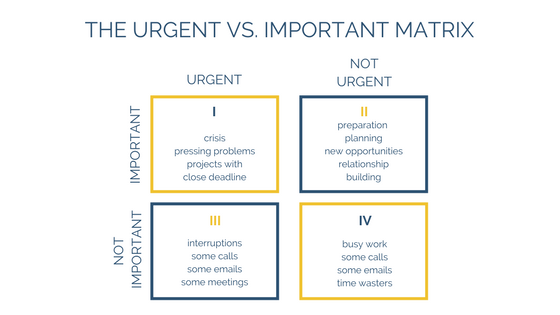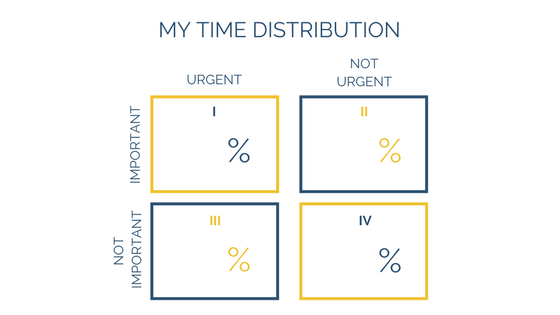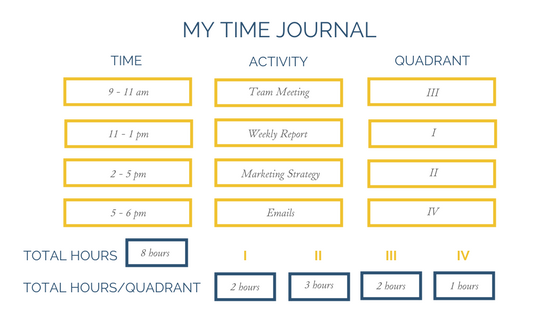Eliminate. Delegate. Optimize.
 Photo by STIL on Unsplash
Photo by STIL on Unsplash
Do you jump between meetings and urgent emails all day only to realize at 6 pm that you have not even started that important project you were supposed to work on? Or prepared for the sales pitch tomorrow? Or finally think about an effective strategy to bring down your customer acquisition cost? Does it feel like time is just flying by and you don?t even know where it went sometimes? Or do you feel you are constantly working on someone else?s priorities instead of pushing on your own goals?
I have been there. It?s called the Urgent vs. Important Dilemma and it completely blocked me from doing any effective work for years. Until I found the Matrix that changed everything. Here is the step-by-step guide I used to solve the Urgent vs. Important Dilemma, claim back my time and finally focus on the important things in my business & life.
Step 1: Understand the Matrix
The Urgent vs. Important Matrix is a powerful productivity tool that can 10x your effectiveness. It consists of 4 quadrants that classify your daily activities according to two parameters: level of urgency and level of importance.

Here is the kind of work that is typical for each quadrant:
Quadrant I:
Pressing problems and crises like rushing to raise money for your startup to pay your employees at the end of the month, dealing with a major fuck-up in the operations department or a PR shit storm. Projects with an approaching deadline like submitting your master thesis on time, sending off that Y Combinator application or submitting your yearly accounts.
Quadrant II:
Planning your marketing strategy for the next 3 months, distributing responsibilities among your team for a new project and creating a detailed project plan for your product launch. Preparing important investor meetings or sales pitches. Building relationships with potential partners and employees. Scouting and researching new opportunities, looking into new fields or strategies and learning new skills.
Quadrant III:
Interruptions from colleagues for irrelevant questions or small talk. Incoming calls, e-mails and meetings ? if they are not relevant for you specifically.
Quadrant IV:
Busy work with no clear impact on the company?s goals and/or your objectives. Incoming calls, e-mails and meetings ? if they are neither timely nor relevant for you specifically and/or necessary to achieve your goals. Time-wasters like social media.
Step 2: Evaluate yourself
To improve your productivity, you not only need to understand the overall concept of the matrix but also need to know where you are at right now. This will help you decide which changes in step 3 will have the most impact for you personally.
To evaluate yourself, take a look at your typical week and estimate the % of your time you spend in each quadrant:

If you have trouble with this exercise, document everything you do for a week. Write down exact times and activities into a table like the following and calculate the percentages in the end by adding together the hours for each quadrant and dividing it by the total work hours. In this example the percentages would be: I ? 25%, II ? 37.5%, III ? 25%, IV ? 12.5%.

If you have trouble classifying your activities according to urgency and importance, here is some more indicators for each quadrant:
- Quadrant I: You feel you are constantly putting out fires and operating in emergency mode. Most of the projects you are working on demand your immediate attention due to a pressing deadline.
- Quadrant II: You feel like you are on top of things because of careful planning, preparation and prevention. Apart from planning and preparation, you focus your time on high-leverage projects, new opportunities, learning and relationship building.
- Quadrant III: Most of your time is spent with activities that require your immediate attention but are not necessarily related to your top priorities. You spend a lot of time in un-important meetings, being interrupted and dealing with non-critical phone calls and emails. You feel as if you are constantly dealing with issues that are important to others but not related to your own priorities.
- Quadrant IV: You often feel like you are wasting your time. You spend a lot of time on busy work that is not directly related to your goals, social media, videos, games and pointless web surfing.
Step 3: Optimize
The most effective people spend 80% of their time in quadrant II of the Urgent-vs.-Important Matrix. This allows them to pro-actively work on new opportunities and high-leverage projects instead of spending all their time reacting to pressing issues and other people?s needs. As a result, they are able to make significant progress towards their goals, actively prevent crises from happening and lead a more balanced, calm and focused life.
Here is what you to do with Quadrant I, III and IV activities to free up more time for Quadrant II activities:
Quadrant IV Activities
Quadrant IV activities are neither urgent, nor important and should thus not be done at all. Here is how to eliminate them:
Eliminate Time-Wasters:
Documenting how you spend your time for an entire week (see Step 2) and tracking your mobile screen time with apps like Pyxsee, QualityTime and AntiSocial can be very helpful in identifying your personal time-wasters. Once you know what?s your weak spots (YouTube, Instagram, Whatsapp, etc.), use these effective strategies to deal with them:
- Limit social media use to specific times in the day (e.g. your commute, lunch break or 5 min breaks)
- Turn off notifications on your phone and computer
- Use an app to block certain sites and apps
- Leave your phone at home when spending time with loved ones
Eliminate Busy Work:
To say it in the words of Peter Drucker: There is nothing so useless as doing efficiently that which should not be done at all. No matter if you are working on a project for your boss or setting your own schedule as an Entrepreneur ? always question WHY you are doing something. The most effective people make sure that what they are working on is directly related to their top goals. Or even better, it is the task with the highest impact on achieving their top goals. Here is how to eliminate busywork:
- Make sure your goals are clearly defined at all times
- Before starting a new project, ask yourself ?Is this really what I should be doing now? Does this make sense??
- Learn to say NO to pointless requests from colleagues
- Challenge your boss if you don?t see the point in doing a specific task
Quadrant III Activities:
Quadrant III activities are not important in the grand scheme of things and not relevant for your top priority goals, but they are urgent and usually important to someone else. Thus, they should be done in the most efficient way possible. Here is how to do it:
Optimize:
Make a list of things that are not directly contributing to your top priorities but still need to be done like replying to emails, attending meetings and administrational stuff like booking flights, scheduling meetings, cleaning and grocery shopping. Then, find the most efficient way to do them. Here are some tips:
- Batch similar tasks together and assign specific times for it. For instance, replying to emails every day at 2 pm and 5 pm
- Use technology to make the process more efficient. For example ordering your groceries online or using a smart email inbox and scheduling tool.
- Make sure these tasks don?t interfere with your most productive times in the day. For example: Keep the mornings meetings free and turn off email notifications while you are doing deep work. Instead, do these tasks in the mid-day slump, on your commute or when waiting in line.
To fully optimize how you spend your time, I recommend setting up a weekly default schedule with time-blocks for all your priorities as well as admin tasks like replying to email. You can download my own weekly schedule template here to give you an idea about how that could look like.
Delegate or Outsource:
Once you have optimized the process, delegating or outsourcing these tasks can help you save even more time. To determine if this strategy makes sense for you, do this quick exercise: Research how much money it will cost you to outsource a specific task ? for instance, hiring a cleaning lady will cost you between 10$?20$/hour. Then, determine the value of your own time in $ ? this could be based on the salary you are making per hour, how much you charge your clients or the monetary potential of the high priority projects you are working on. In some cases it even makes sense to add ?emotional? costs on top ? for example: if you hate cleaning so much that it not only affects the hour in which you are cleaning but also your mood and productivity for the rest of the day. Finally, compare the costs to determine if it makes sense to outsource a specific task to a virtual assistant, project assistant or cleaner.
Quadrant I Activities:
The problem with quadrant I activities is that you can?t get around them. They are urgent AND important and thus will have serious consequences if you don?t do them. But there are two things you can do to decrease the time you spend in emergency mode:
Do the task as efficiently as possible:
- Delegate it to someone you trust to do the job well
- Make fast decisions and communicate effectively with everyone involved
- Block out all distractions and power-through the task
- Get it out of the way first thing in the morning so you can focus on other things the rest of the day
Do more Quadrant II activities:
The more you focus on quadrant II activities the less quadrant I activities will be on your plate as you are actively preventing them from happening in the first place. Here is how to include more quadrant II activities into your week:
- Schedule them into your calendar: Actively block out time for important tasks like planning your week, developing your marketing strategy, learning new skills, building relationships and identifying new opportunities. Choosing the same time slots every week can be extremely helpful at staying consistent with your quadrant II activities. For example: block out the first hour of Monday morning to plan your week, set recurring monthly strategy meetings, attend events or dinner every Thursday evening and invest Friday afternoons in learning new skills and doing research for upcoming projects. Again, I recommend setting up a weekly default schedule with time-blocks for all your priorities as well as admin tasks. You can download my own weekly schedule template here to give you an idea about how that could look like.
- Do them in your mental peak times: Quadrant II activities are usually very thinking-heavy and are thus requiring you to have a focused and energised state of mind. Make sure to reserve the times you work best for quadrant II ? whether its early mornings, evenings or right after your workout.
ARE YOU READY TO UP YOUR GAME?
Sign-Up to my email list for access to my free resources and a weekly digest of my best content, mixed in with other great writers. I would love to have you in my tribe!
?? Sign-Up to my e-mail list
 http://bit.ly/signup-lizhuber
http://bit.ly/signup-lizhuber
?? Sign-Up to my e-mail list
More from Liz Huber:
8 Ways to Upgrade your Life by 10x This Year
This is not a pointless collection of random habits.
medium.com
8 Brutally Honest Lessons From Growing My Coaching Business From $0 to $6k+, in 2 Months
You can charge as much as you want, as long as you believe it
entrepreneurshandbook.co

This story is published in The Startup, Medium?s largest entrepreneurship publication followed by 340,876+ people.
Subscribe to receive our top stories here.



